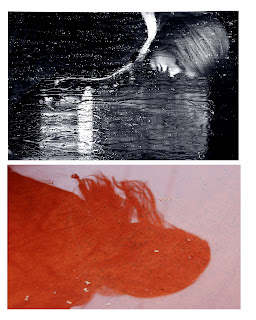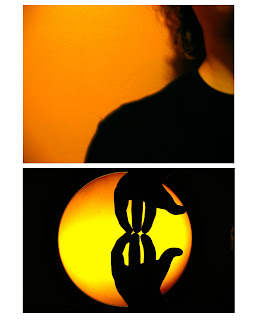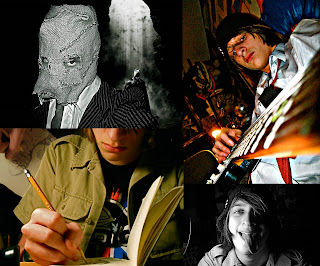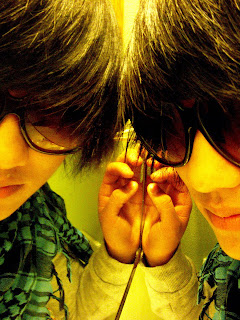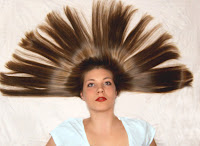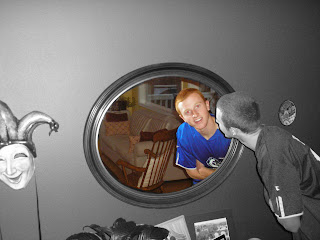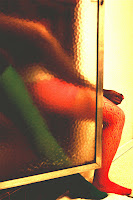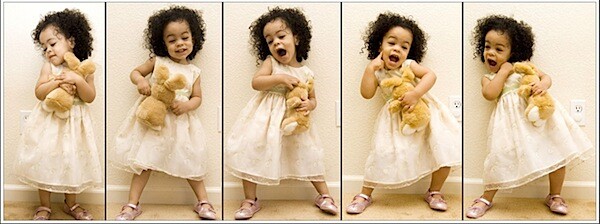This site is a tool for students in Digital Photo at Shorecrest. It is used to give you useful information about our class, assignments, and due dates.
Monday, April 25, 2011
Contest Time!!!
STILL LIFE
A photograph of an object or objects found or arranged by the photographer.
PORTRAIT
A photograph of a person, or group of people, in which the photographer controls the
pose, setting and/or lighting.
ARCHITECTURE
A photograph of a man-made structure which can include architectual details.
MANIPULATION/ALTERNATIVE PROCESS
A photograph manipulated beyond what is considered basic darkroom techniques
(Heavy use of photoshop, solarization, cyanotype, collage, etc.).
LANDSCAPE/CITYSCAPE color & digital
A color photograph or digital image of a natural or urban scene.
PEOPLE color and digital
A color photograph or digital image of a person or group of people.
COLOR color & digital
An image celebrating the use of color.
Have fun with it, be creative, think out of the box!
here are the 2010 winners:
http://kenmorecamera.com/wshs/2010/2010PhotoContest.htm
and the 2009 winners:
http://kenmorecamera.com/wshs/2009/2009PhotoContest.htm
Thursday, April 14, 2011
PORTRAIT TO TURN IN
- 4 full size .jpeg images, edited, from in class
- 5 full size .jpeg images, edited 5 specific ways, from out of class
- 50 image contact sheet from out of class
- 16 image contact sheet from in class
SPRING BREAK!!! SELF P'S
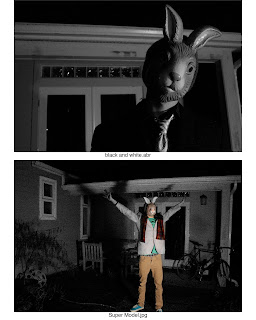
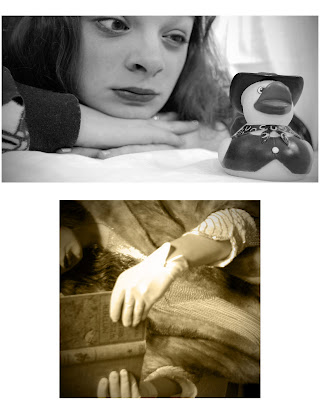
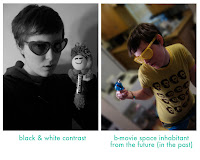
self portraits!!!
The Art of Constructing a Self-Portrait
A self-portrait comes from within. Injecting 'those we love' into the portrait steers one away from the harder task to trying to reveal self without adornment.
If you eat, sleep, and live for speed then your self-portrait should reflect motion and movement as one of its cornerstones.
If you are a reflective type, then reflections and patterns and their intersections should occupy a primary space.
If overall you feel more flawed then whole, then you wouldn't want to go about photographing the most pristine parts of yourself; you would want, instead, to capture your essence in a manner that describes and defines you without complaining. I say that because the essence of self-discovery requires you to be a benign observer of self so as not to hone in too closely on this or that part.
A sense of 'wholeness' is difficult to capture at best. Indeed, wholeness is almost impossible for some people to even understand -- let alone capture in themselves -- because their persons and their lives are so fragmented, so disorganized in general.
But that is what self-portraiture is all about, capturing the whole -- the whole of who you are as a person.
Try to be unforgiving in a benign and neutral way. Study yourself in the mirror and photograph what you see there. Then go inside yourself and photograph what you see there.
You will shoot four different good self-portraits over break (it will take LOTS of images to achieve 4 good photos). You need to pick four photo types from the following six categories, each final photo needs to come from a different category:
1. A self-portrait where color is emphasized. Color may include wardrobe, location, props, or natural objects. Think of your picture as a one or two color concept picture.
2. A picture that emphasizes lighting and shadows. This will be a grayscale self-portrait.
3. A self-portrait that showcases your interests and hobbies. In this picture we learn what you like to do away from school. Think about what interests you and transfer that into a photo.
4. A fantasy self-portrait. Dress up and use costumes. In this self-portrait you can use Photoshop to enhance your picture in any way, shape, or form. Transfer yourself to Hawaii or become a Viking like you have always wanted.
5. The Supermodel self-portrait. Dress up like a GQ or Cosmopolitan magazine model. This can be a grayscale or color picture. You will use Photoshop to airbrush and enhance this photo.
6. An abstract self portrait that focuses on textures, shapes, and interesting lines and patterns. You must be the subject of this image, but represent yourself in a creative, abstract and unique way where you are only partially recognizable...
Monday, April 11, 2011
Editing Pics!!!
To Edit:
Studio - your 4 best pics, one from each lighting station. Edit them as you see fit. You will be turning these in as well as a contact sheet of 16 studio pics on Thursday/Friday.
Out of class portraits:
We will edit these in 5 specific ways:
- Vignette
- Selective Focus
- B&W
- B&W with one color
- One unique edit (change eye color, hair color, color cross, andy warhol etc) see tutorials below:
http://www.hongkiat.com/blog/30-nicest-photoshop-photo-effects-part-ii/
Other Tips:
Healing Brush

B&W adjustment layer

Friday, April 8, 2011
out of class portraits
- 50+ portraits
- of one or two people
- from 2 different locations
- with 3+ wardrobe/prop/makeup etc changes.
- lots of different angles/compositions
out of class portraits
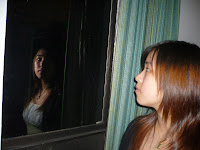
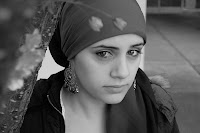
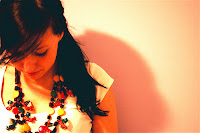
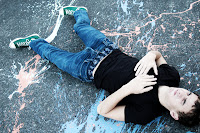
1. Find one or two interesting human subjects. The people you choose should WANT to be in the picture and they should be willing to cooperate.
2. Talk to your subject. You are the director of this adventure, make it what you want. Use colors or lighting to create a concept for your portrait. Costumes or uniforms work great. Imaginary ideas are good. Choose an interesting setting based on your concept.
3. Change angles between shots. Shoot at least 25 pictures of EACH of your two subjects. This will give a good variety of images to pick your 30 from.
5. Change your lighting; Use filters, flashlights, lamps, or multiple lights to enhance your picture.
6. Remember you are the boss, make them change their expression. Pretend it is high fashion and they have to create the next great "look" like blue steel (Zoolander).
7. Most importantly for this assignment don't forget your composition rules. Use framing, leading lines, rule of thirds, color contrast etc. to enhance your photo. And Always Fill the frame!!!!
HAVE FUN & BE CREATIVE!!!! try to think out of the norm to come up with a creative setting, pose, expression, outfit, etc to make an amazing portrait!!!!
Tuesday, April 5, 2011
Studio Specifics
- Groups of 4 to 6
- 5 pix per PERSON per station
- use props
- experiment with lighting, angles, composition, etc
- We will have both class periods this week for in studio images
- out of class portrait assignment to come on Thursday.
Different Lighting Styles
Short light is type of studio lighting setup, where the face side which is further from the camera gets the main light. see the diagram for details. In this type of lighting setup, the side of the face which is toward the camera gets less light then the side facing away form the camera. The effect you get when using this lighting setup is a thin face, this is why it is good to photograph fat (or chubby) people with a short light setup.

Diagram 1 - Short Light
Let's look at a picture of a friend of mine - Winnie the poo. Looks like Winnie had allot of honey and he is quite chubby. The flash is set up to my right, and Winnie is looking to his left. This make his face look a bit thinner than what they really are. Short light is very useful in portrait photography, as it gives drama to the subject. (Short light setup also stresses skin wrinkles, to create even more drama for older people)

What Is Broad Light?
Broad light is just the opposite of Short light. In the Broad Light setup, THe side that is getting the most light is the side turning towards the camera. This setup is less commonly used for portraits as it tends to make people look chubby. See the diagram for setup.

Diagram 2 - Broad Light
Lets look at Winnie again. This picture was taken at the same focal length (135mm with 1.5 crop factor D70's sensor). This time Winnie looks very chubby. Oh Winnie! what have you been eating? Also note how the picture looks a bit flatter. There are not allot of light and shade plays.

For both types of light you can use a fill light at the opposite side to the main light, or do as I did and use a reflector at 45 deg. (see diagrams).
Conclusion:
| Light Type | Side to Get Most Light | Chubbiness | Wrinkles |
| Short Light | Away From Camera | Reduce | Intensify |
| Broad Light | Facing Camera | Increase | Reduce |
Short Lighting
Short lighting illuminates the part of the face that is not facing directly at the camera. In Figure Z, we can see that the side of the face facing the camera is in the shadow side. Short lighting often is the preferred light positioning for most portraits especially for rounder faces or faces less defined facial features.

Putting the shadow side of the face closer to the camera narrows down the face and works well for majority of subjects except those with long or thin faces.
Broad Lighting
Broad lighting is the opposite of short lighting where the lit portion of the face faces the front of the camera. Showing the lit portion of the face directly at the camera broadens the face as it illuminates majority of the subject’s face instead of hiding it in the shadows.

While not as popular as short lighting, broad lighting can be used effectively with thinner faces and can make subjects such as the elderly look more radiant and lively. Broad lighting is a “cheerful” light position that portrays openness and excitement.
Read more: http://www.howitookit.com/classic-lighting-styles.html#ixzz14njY6ZBR

Studio Lighting in class





Studio Lighting!!!
Your task this week is to shoot some interesting , creative and unique portraits using the studio lights. Remember the different lighting techniques demonstrated in class. Use the lights to add emotion, feeling, or interesting shadows to your images. Try to think out of the box, manipulate the image with Manual settings on the camera, blur motion, stop action, take tons of pics, and ha
 ve FUN! Shoot for the period in groups of 4 to 6 per light station. Everyone should shoot their own photo session. Take turns as each others subjects. Shoot a minimum of 5 pictures per photographer per station.
ve FUN! Shoot for the period in groups of 4 to 6 per light station. Everyone should shoot their own photo session. Take turns as each others subjects. Shoot a minimum of 5 pictures per photographer per station. 

Monday, April 4, 2011
10 tips
I want to look at some ways to break out of the mold and take striking portraits by breaking (or at least bending) the rules and adding a little randomness into your portrait photography. I’ll share ten of these tips today and a further ten tomorrow (update: you can see the 2nd part here).
1. Alter Your Perspective
Most portraits are taken with the camera at (or around) the eye level of the subject. While this is good common sense – completely changing the angle that you shoot from can give your portrait a real WOW factor.
 Photo by striatic
Photo by striaticGet up high and shoot down on your subject or get as close to the ground as you can and shoot up. Either way you’ll be seeing your subject from an angle that is bound to create interest.
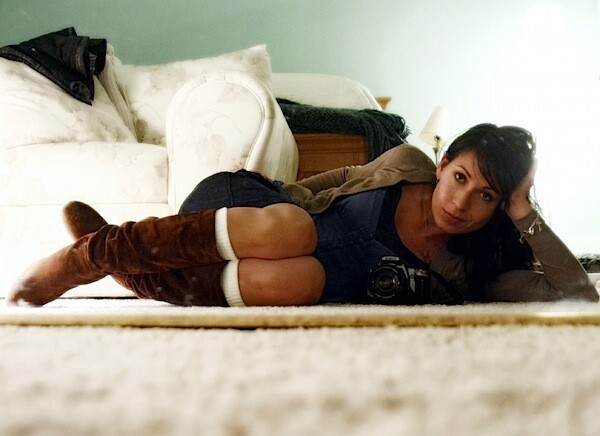 Photo by TeeRish
Photo by TeeRish2. Play with Eye Contact
It is amazing how much the direction of your subject’s eyes can impact an image. Most portraits have the subject looking down the lens – something that can create a real sense of connection between a subject and those viewing the image. But there are a couple of other things to try:
A. Looking off camera – have your subject focus their attention on something unseen and outside the field of view of your camera. This can create a feeling of candidness and also create a little intrigue and interest as the viewer of the shot wonders what they are looking at. This intrigue is particularly drawn about when the subject is showing some kind of emotion (ie ‘what’s making them laugh?’ or ‘what is making them look surprised?’). Just be aware that when you have a subject looking out of frame that you can also draw the eye of the viewer of the shot to the edge of the image also – taking them away from the point of interest in your shot – the subject.
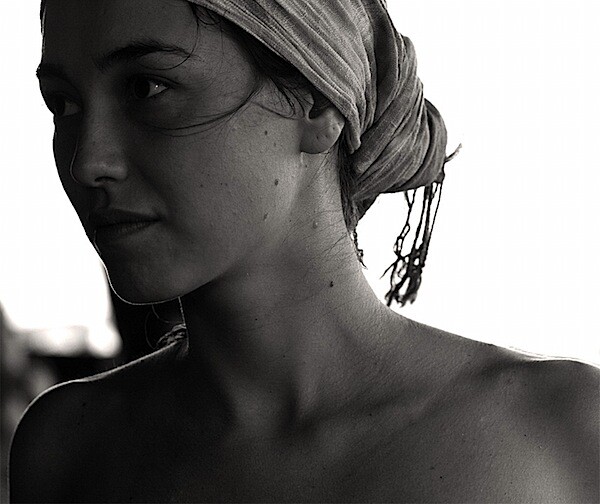 Photo by monicutza80
Photo by monicutza80B. Looking within the frame – alternatively you could have your subject looking at something (or someone) within the frame. A child looking at a ball, a woman looking at her new baby, a man looking hungrily at a big plate of pasta…. When you give your subject something to look at that is inside the frame you create a second point of interest and a relationship between it and your primary subject. It also helps create ’story’ within the image.
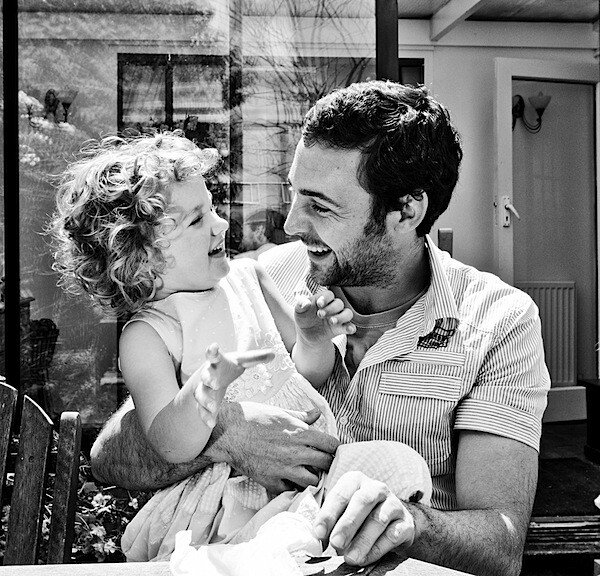 Photo by paulbence
Photo by paulbence3. Break the Rules of Composition
There are a lot of ‘rules’ out there when it comes to composition and I’ve always had a love hate relationship with them. My theory is that while they are useful to know and employ that they are also useful to know so you can purposely break them – as this can lead to eye catching results.
The Rule of Thirds is one that can be effective to break – placing your subject either dead centre can sometimes create a powerful image – or even creative placement with your subject right on the edge of a shot can sometimes create interesting images.
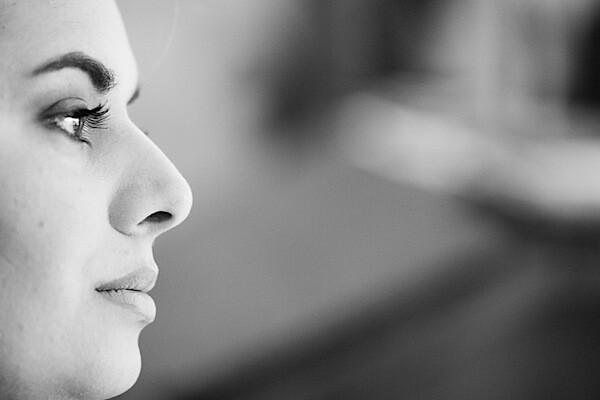 Photo by reportergimmiâ„¢
Photo by reportergimmiâ„¢Another ‘rule’ that we often talk about in portrait photography is to give your subject room to look into. This can work really well – but again, sometimes rules are made to be broken.
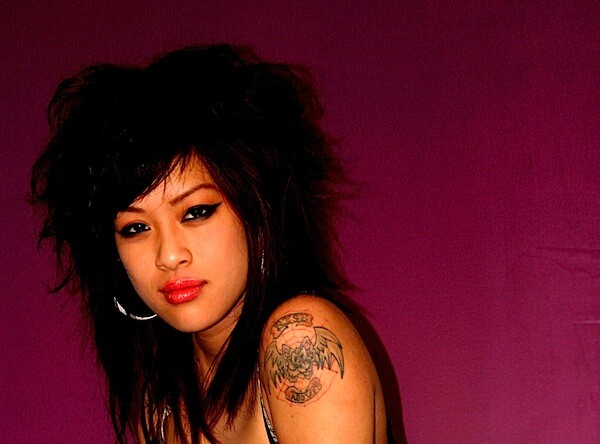 Photo by Bukutgirl
Photo by Bukutgirl4. Experiment with Lighting
Another element of randomness that you can introduce to your portraits is the way that you light them. There are almost unlimited possibilities when it comes to using light in portraits.
Side-lighting can create mood, backlighting and silhouetting your subject to hide their features can be powerful.
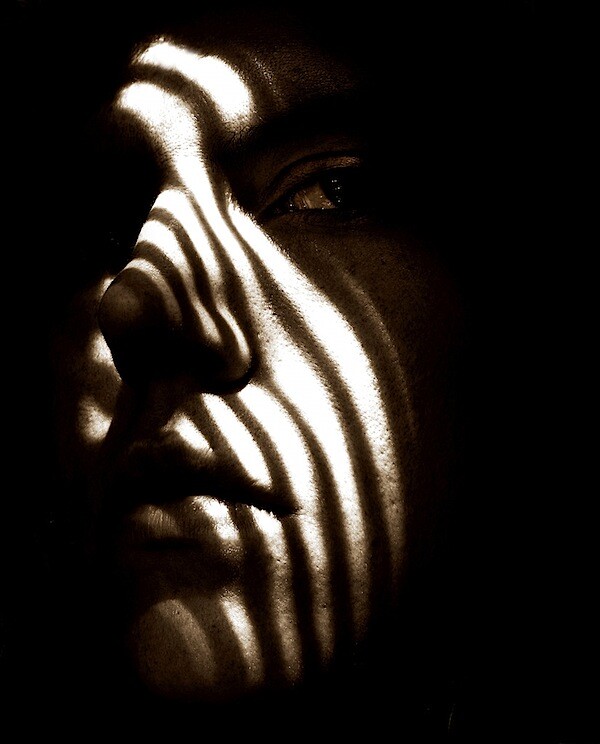 Photo by Bukutgirl
Photo by BukutgirlUsing techniques like slow synch flash can create an impressive wow factor.
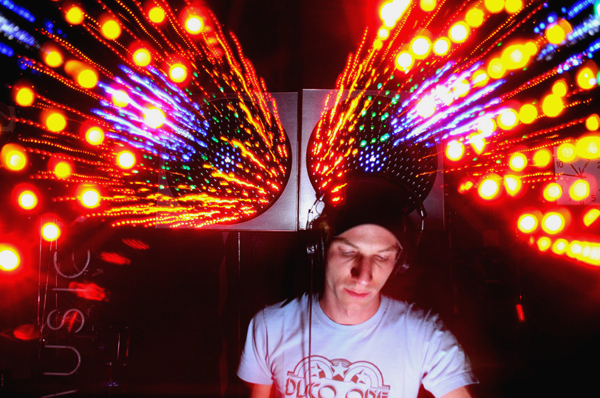 Photo by diskomethod
Photo by diskomethod5. Move Your Subject Out of their Comfort Zone
I was chatting with a photographer recently who told me about a corporate portrait shoot that he had done with a business man at his home. They’d taken a lot of head and shoulder shots, shots at his desk, shots in front of framed degrees and other ‘corporate’ type images. They had all turned out fairly standard – but there was nothing that really stood out from the crowd.
The photographer and the subject agreed that there were plenty of useable shots but they wanted to create something ’special’ and out of the box. The photographer suggested they try some ‘jumping’ shots. The subject was a little hesitant at first but stepped out into the uncomfortable zone and dressed in his suit and tie started jumping!
The shots were amazing, surprising and quite funny. The shoot culminated with the subject jumping in his pool for one last image!
While this might all sound a little ’silly’ the shots ended up being featured in a magazine spread about the subject. It was the series of out of the box images that convinced the magazine he was someone that they’d want to feature.
 Image by TeeRish
Image by TeeRish6. Shoot Candidly
Sometimes posed shots can look somewhat…. posed. Some people don’t look good in a posed environment and so switching to a candid type approach can work.
Photograph your subject at work, with family or doing something that they love. This will put them more at ease and you can end up getting some special shots with them reacting naturally to the situation that they are in. You might even want to grab a longer zoom lens to take you out of their immediate zone and get really paparazzi with them.
I find that this can particularly work when photographing children.
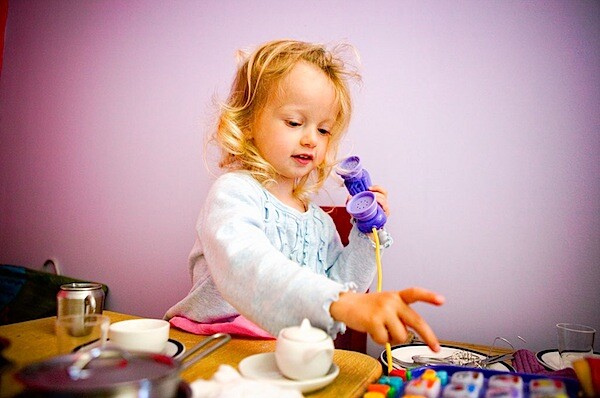 Photo by phitar
Photo by phitar7. Introduce a Prop
Add a prop of some kind into your shots and you create another point of interest that can enhance your shot.
Yes you might run the risk of taking too much focus away from your main subject but you could also really add a sense of story and place to the image that takes it in a new direction and gives the person you’re photographing an extra layer of depth that they wouldn’t have had without the prop.
 Photo by Mrs. Maze
Photo by Mrs. Maze8. Focus Upon One Body Part – Get Close Up
Get a lens with a long focal length attached to your camera – or get right in close so that you can just photograph a part of your subject. Photographing a person’s hands, eyes, mouth or even just their lower body… can leave a lot to the imagination of the viewer of an image.
Sometimes it’s what is left out of an image that says more than what is included.
 Photo by Bukutgirl
Photo by Bukutgirl9. Obscure Part of your Subject
A variation on the idea of zooming in on one part of the body is to obscure parts of your portrait subject’s face or body. You can do this with clothing, objects, their hands or just by framing part of them out of the image.
Doing this means that you leave a little to the imagination of the image’s viewer but also focus their attention on parts of your subject that you want them to be focused upon.
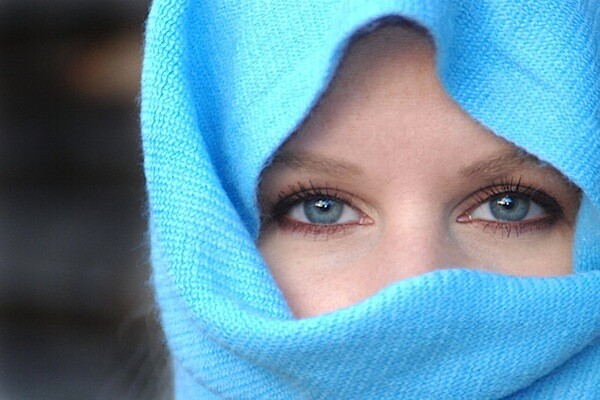 Photo by BigBlonde
Photo by BigBlonde10. Take a Series of Shots
Switch your camera into ‘burst’ or ‘continuous shooting’ mode and fire off more than one shot at a time.
In doing this you create a series of images that could be presented together instead of just one static image.
This technique can work very well when you’re photographing children – or really any active subject that is changing their position or pose in quick succession.

